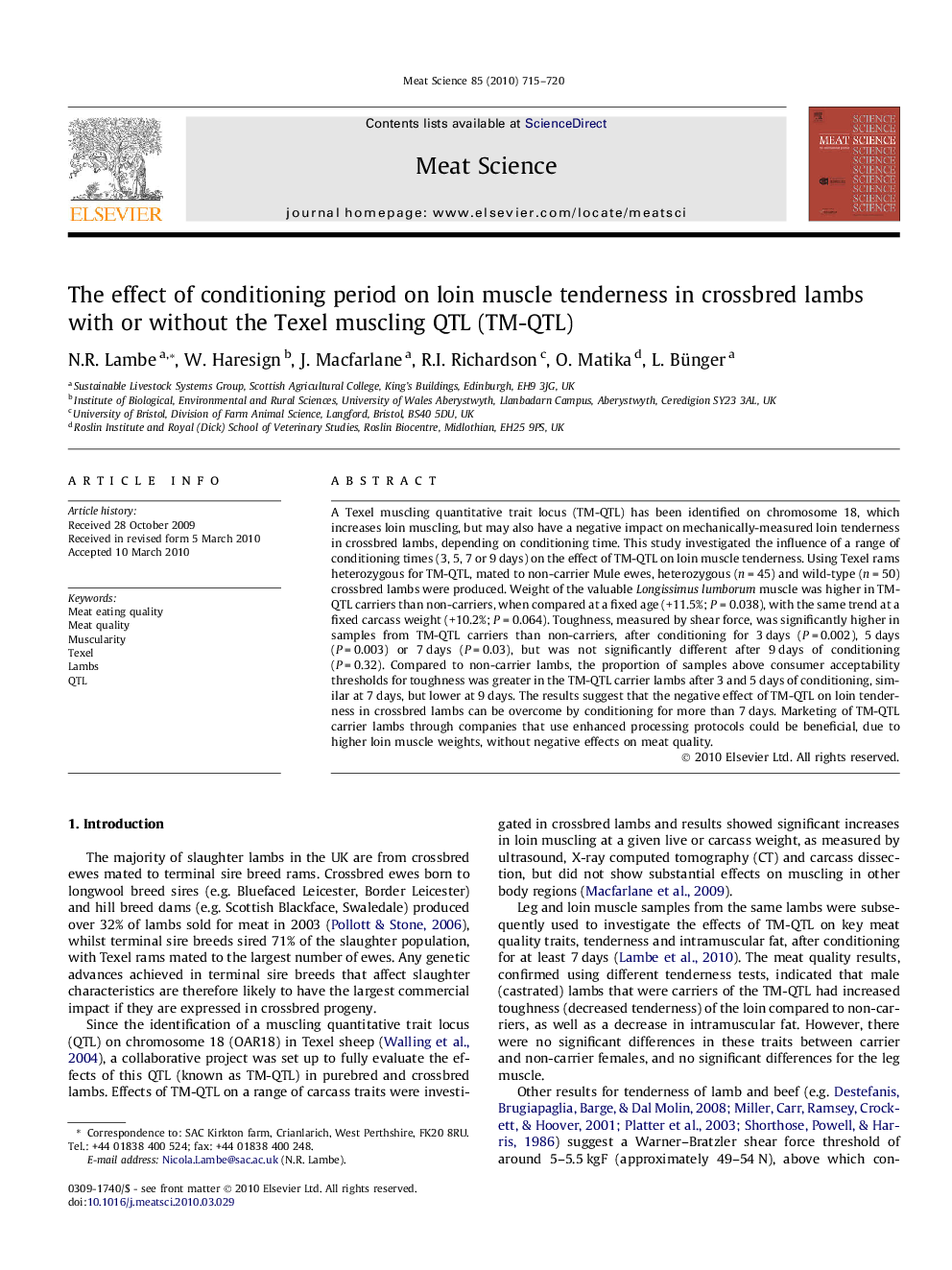| Article ID | Journal | Published Year | Pages | File Type |
|---|---|---|---|---|
| 2450354 | Meat Science | 2010 | 6 Pages |
A Texel muscling quantitative trait locus (TM-QTL) has been identified on chromosome 18, which increases loin muscling, but may also have a negative impact on mechanically-measured loin tenderness in crossbred lambs, depending on conditioning time. This study investigated the influence of a range of conditioning times (3, 5, 7 or 9 days) on the effect of TM-QTL on loin muscle tenderness. Using Texel rams heterozygous for TM-QTL, mated to non-carrier Mule ewes, heterozygous (n = 45) and wild-type (n = 50) crossbred lambs were produced. Weight of the valuable Longissimus lumborum muscle was higher in TM-QTL carriers than non-carriers, when compared at a fixed age (+11.5%; P = 0.038), with the same trend at a fixed carcass weight (+10.2%; P = 0.064). Toughness, measured by shear force, was significantly higher in samples from TM-QTL carriers than non-carriers, after conditioning for 3 days (P = 0.002), 5 days (P = 0.003) or 7 days (P = 0.03), but was not significantly different after 9 days of conditioning (P = 0.32). Compared to non-carrier lambs, the proportion of samples above consumer acceptability thresholds for toughness was greater in the TM-QTL carrier lambs after 3 and 5 days of conditioning, similar at 7 days, but lower at 9 days. The results suggest that the negative effect of TM-QTL on loin tenderness in crossbred lambs can be overcome by conditioning for more than 7 days. Marketing of TM-QTL carrier lambs through companies that use enhanced processing protocols could be beneficial, due to higher loin muscle weights, without negative effects on meat quality.
